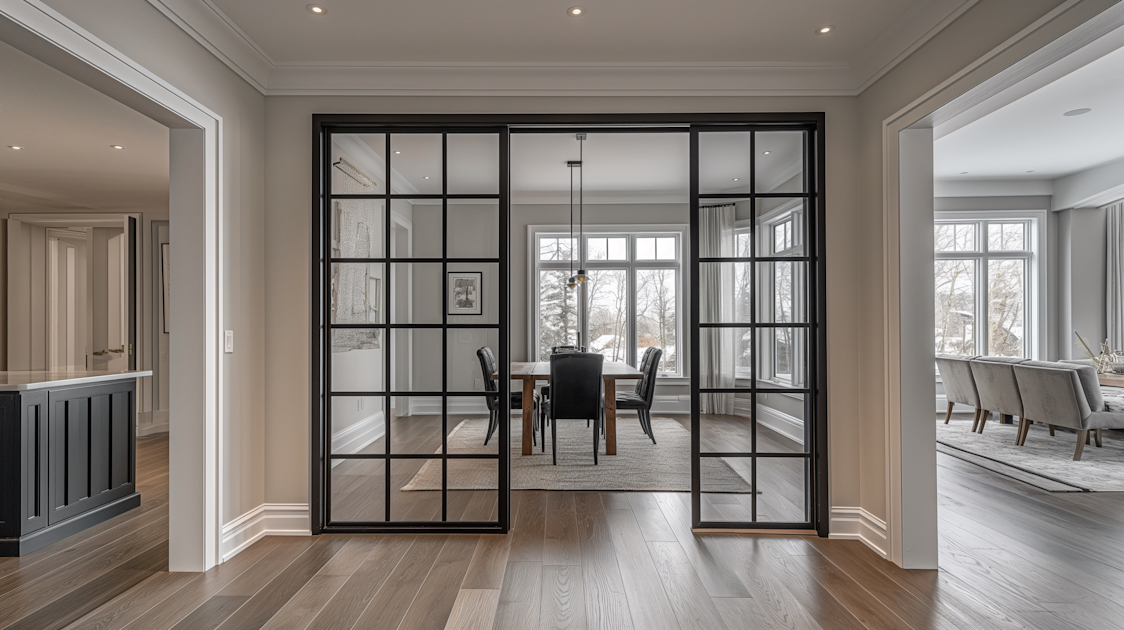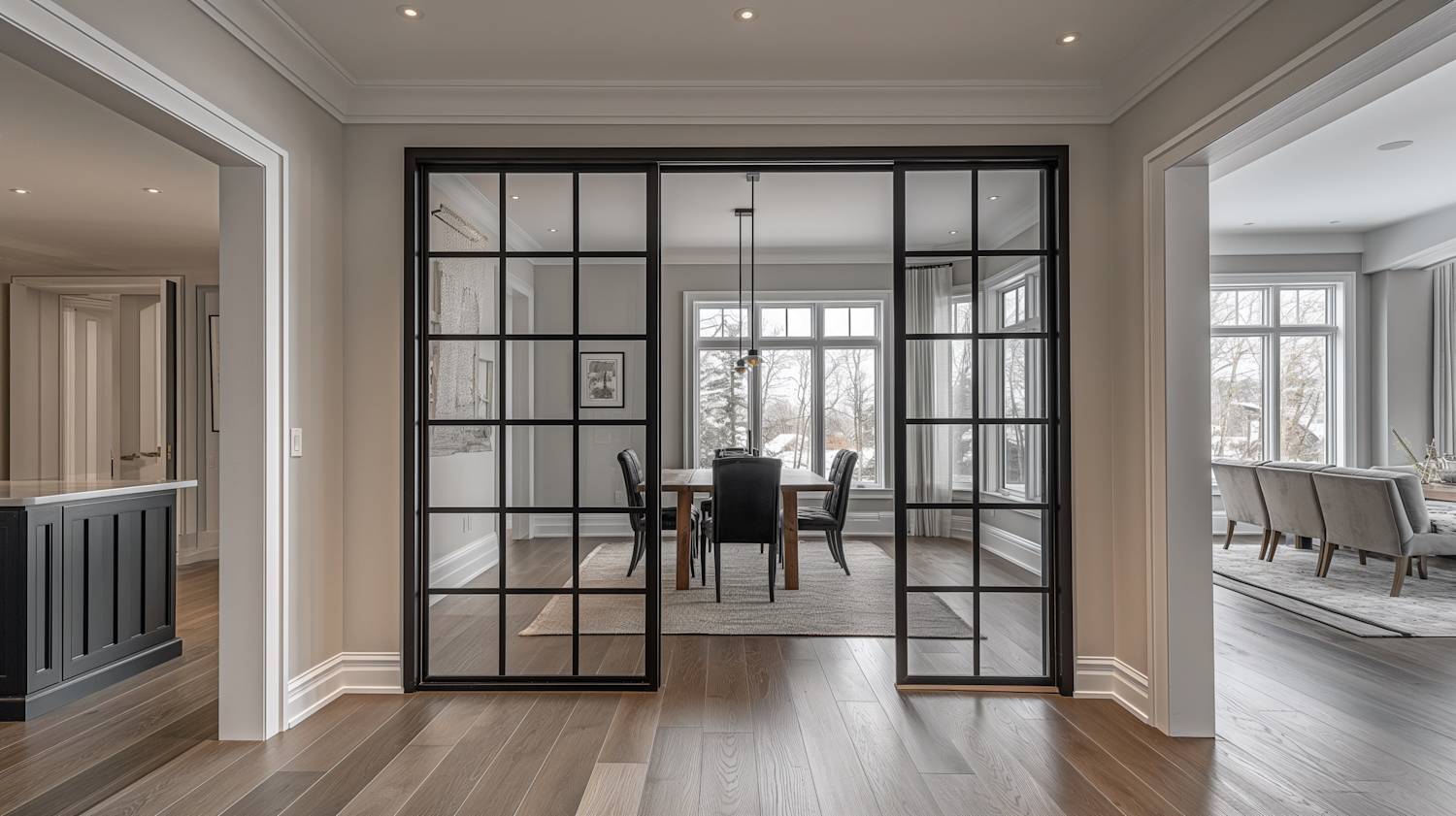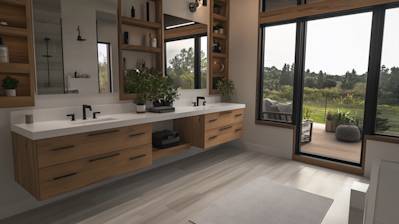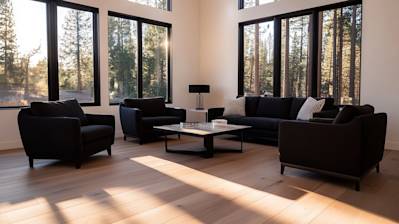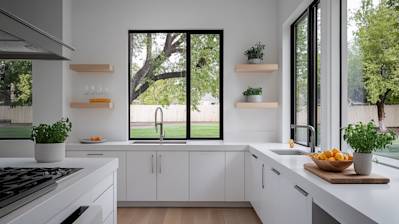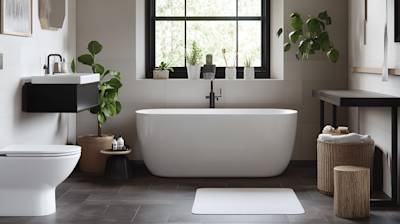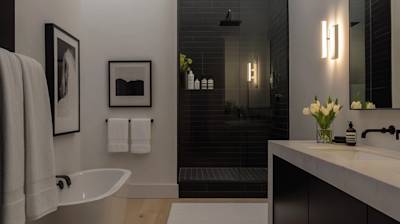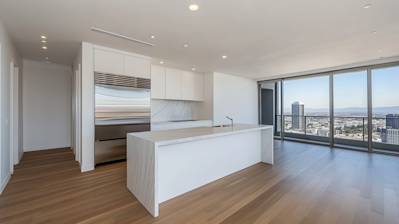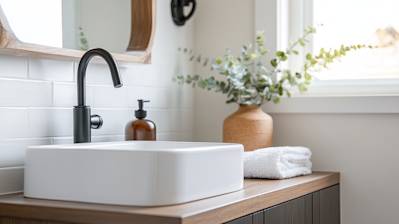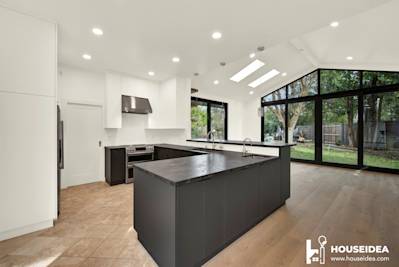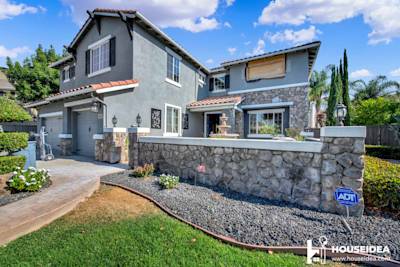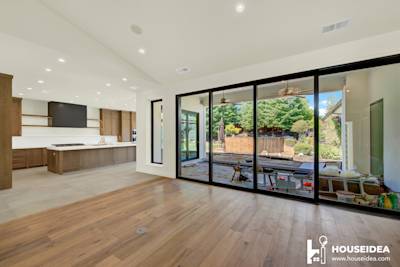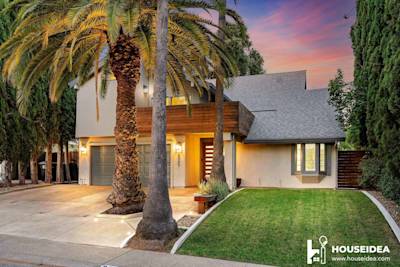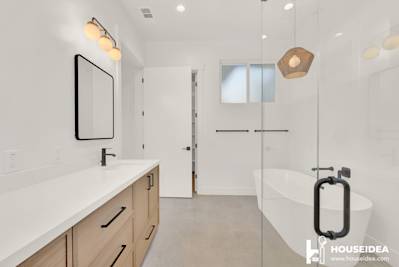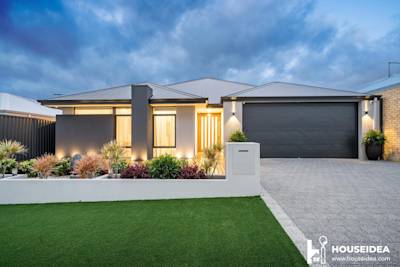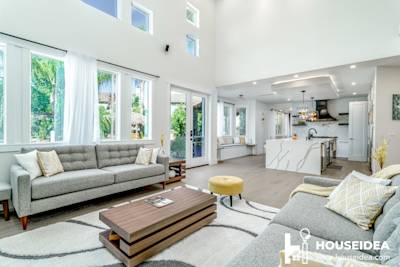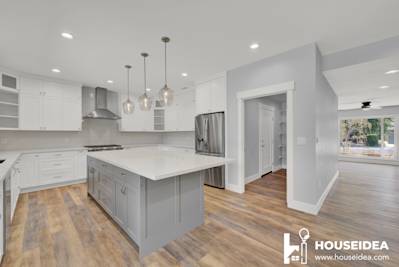Choosing the right interior windows for your home or office can be an exciting, yet daunting task. You have to consider style, functionality, and energy efficiency, among other factors. In this article, we aim to bring you a detailed guide on everything you need to know about interior windows. We dive deep into its types, styles, how to maintain them, and some popular trends in interior windows.
A Quick Look At What Interior Windows Are
Interior windows are a crucial part of any architectural design. They act as a barrier, protect against the weather, insulate the home, and allow light to pass through, all while enhancing the visual aesthetics of your indoor space. These features make them a valuable aspect of interior decoration and functionality in any home.
Types of Interior Windows
There are several types of interior windows, each presenting its unique style and functionality. Understanding the available options can help you make an informed purchase decision that matches your style and functional needs. Here are some of the most common types:
-
Casement windows: This type of window is hinged at the side and swings outward. It provides excellent ventilation and a clear view of the outside.
-
Double-hung windows: They have two operable sashes that move vertically. These windows are traditional in style and allow for adequate ventilation.
-
Awning windows: Hinged at the top and opening outward, awning windows are excellent for ventilation even during light rainfall.
-
Picture windows: These are fixed windows that do not open, largely serving to provide unobstructed outdoor views.
Different Styles of Interior Windows
Interior windows manifest in different styles. Besides providing light and ventilation, each style adds a unique signature to the overall interior aesthetics. Some of the highly sought styles include:
Bay Windows
Bay windows are a combination of three windows that protrude from the building. This style creates extra space in your home and allows plenty of natural light.
Skylight Windows
Just as the name suggests, these windows are fitted on the roof, allowing natural light to cascade from above. They are perfect for spaces where wall space is limited or non-existent.
Divided-Light Windows
Popular in traditional homes, these windows have small panes of glass separated by muntins. They offer timeless elegance and charm.
Maintaining Interior Windows
Maintenance is key to ensuring your interior windows last and function efficiently. Whether you have vinyl, wooden, or aluminum windows, regular cleaning, inspection for damage, and swift repairs are essential. Some tips for maintaining your windows include:
-
Regularly clean your windows using a soft cloth and recommended cleaning products to avoid damaging the surface.
-
Inspect the windows for any signs of damage such as cracks or warping. Timely repair can prevent further damage.
-
Check seals or weatherstripping for any wear and tear as it may affect the energy efficiency of your windows.
-
Ensure moving parts are lubricated to allow for smooth operation.
Trending in Interior Windows
As architectural styles and interior decor trends evolve, so does the style of interior windows. Emerging trends in interior windows include:
-
Large scale windows for unobstructed views and more natural light
-
Industrial style black-framed windows for a contemporary look
-
Smart windows with energy-efficient features and automated controls
Choosing Your Interior Windows
With many options to choose from, settling on the right interior window can be a difficult decision. However, when choosing, consider the architectural style of your house, the amount of light you want in a room, your budget, and the purpose of the window. It is also sensible to work with a reputable company and ensure the windows are professionally installed for durability and optimum performance.
Interior windows are essential in your home's architectural design and interior decor. As such, choosing the right type, style, and maintaining them will keep your home or office looking vibrant while enhancing its functionality.
Frequently Asked Questions About Interior Windows
What are the different types of interior windows?
There are many types of interior windows to choose from, depending on your needs and design preferences. Some popular choices include picture windows, which provide a large, unobstructed view, casement windows that are hinged and swing out, and sliding windows that slide horizontally. There are also hopper windows that open inward, perfect for small spaces, and design-specific windows like bay, bow, and jalousie windows.
How do I choose the right interior windows for my home?
Your choice of interior windows should primarily depend on your specific needs, style preferences, and the architectural style of your home. Factors such as insulation, noise reduction, privacy, natural light, and ventilation should also be taken into consideration. It’s advised to consult with an interior design or windows expert to guide you in making the right choice.
What materials are typically used for interior windows?
Interior windows are typically made from a variety of materials including wood, vinyl, aluminum, and fiberglass. Each material has its own advantages and can be chosen based on factors like durability, maintenance, insulation, and cost. For instance, wood offers a classic, timeless look but requires regular maintenance, while vinyl is easy to maintain but may not match all architectural styles.
Are there custom design options for interior windows?
Yes, many manufacturers offer custom design options for interior windows. This means you can choose the specific size, shape, color, finish, material, and glass type for your windows. Some companies even offer designer glass, such as stained or textured, for an extra touch of style and individuality.
How are interior windows installed?
Interior windows should be installed by a professional to ensure they are secure, well-insulated, and properly functioning. The installation process typically involves removing the old window (if any), preparing the opening, and installing the new window. After the window is installed, the expert will check for any gaps and seal them to prevent drafts and water intrusion.
How much do interior windows cost?
The cost of interior windows can vary widely based on a number of factors, including the type, size, material, and design of the window, as well as the complexity of the installation process. On average, you can expect to pay anywhere from $100 to over $1000 per window, excluding installation costs. It’s advisable to get quotes from several providers to compare costs and value for money.
What is the maintenance required for interior windows?
Interior windows typically require regular cleaning to remove dirt and dust. The type of material used for the window will also determine the maintenance required. For instance, wood windows may need to be repainted or stained periodically to maintain their appearance and protective barrier, while vinyl or aluminum windows may only require occasional cleaning. Always refer to the manufacturer's recommendations for specific maintenance instructions.
Can interior windows improve energy efficiency?
Yes, many types of interior windows are designed to improve energy efficiency in the home. Windows with features such as double glazing, low-e coatings, and energy-efficient materials can help to reduce heat transfer, keep your home more comfortable, and reduce heating and cooling costs. When selecting interior windows, look for those with Energy Star ratings for the best energy efficiency.
Pros and Cons of Interior Windows
Pros of Interior Windows
Enhanced Light Penetration
One of the significant advantages of interior windows is their ability to enhance natural light penetration. They significantly reduce the need for artificial lighting during the day, saving energy costs. Benefits include:
- Increased natural light has been proven to boost mood and productivity, especially in office spaces.
- A well-lit room appears bigger and more welcoming than a poorly lit one.
Improved Air Circulation
Interior windows allow better airflow and improve cross ventilation inside the premises. This provides:
- A cooler and fresher environment during hot weather.
- Reduced mold and dampness that is often the result of poor ventilation.
Enhanced Interior Design Aesthetic
Interior windows can significantly enhance the overall design aesthetic of your interior space. Key benefits include:
- The various stylish designs and frames from which to choose allow homeowners to match the interior windows with the existing decor.
- With their sleek frames and clean lines, interior windows can add elegance and sophistication to any room.
Increased Perceived Space
An interior window can make rooms appear larger than they actually are. By providing a visual expansion of the space, they help create an illusion of a larger room. This is especially valuable in smaller apartments and office spaces.
Cons of Interior Windows
Potential Privacy Issues
One significant downside of interior windows is the potential loss of privacy. If not chosen properly:
- The transparency of these windows can compromise the intimacy and seclusion of a room.
- They may not be an ideal choice for rooms that require a high level of privacy, such as bedrooms or bathrooms.
Sound Insulation
The lack of sound insulation with interior windows is another concern. If not effectively sealed or if the glass is thin:
- They can allow unwanted noise to seep into rooms causing disruption and discomfort.
- This can hinder productivity in office settings, or disturb the tranquility of a home environment.
Additional Cleaning and Maintenance
Interior windows require additional cleaning and maintenance as:
- They tend to gather dust and grime, especially if they lead to kitchen or outdoor areas.
- Maintaining the glass shiny and streak-free demands regular cleaning, incurring extra time and effort.
Cost of Installation and Replacement
The cost associated with the installation and replacement of interior windows can also be substantial. Factors to consider include:
- If not part of the original home design, the cost and effort of retrofitting interior windows can be high.
- The often complex installation process may require professional help, leading to added costs.
- Should they need replacement due to breakage or design update, the process can be costly and time-consuming.
Summary
Installing interior windows is key to ensuring a warm and cozy living environment. These windows provide much-needed insulation to keep your room temperature regulated during peak summer or chilling winter. Interior windows aren't just functional but also designed in a wide array of styles to enhance the visual appeal of your home.
Another upside of using interior windows is they allow a good amount of natural light inside the room. This helps paint the room in a cheerful ambiance, reduces dependency on artificial light and subsequently cuts down your energy bills. Even better, interior windows serve as a great sound buffer, ensuring your home is your tranquil haven.
It can't be denied how crucial interior windows are to the overall structure and appeal of a home. Despite their seemingly simple function, they make a significant contribution to comfortable living, energy efficiency and aesthetic appeal. Ultimately, their benefits underscore why every homeowner should seriously consider having them installed or upgraded.
About HouseIdea
Welcome to HouseIdea, a residential haven in Sacramento, CA. For us, there's no place like home. That's why we've dedicated our lives to designing and building stunning, custom houses that reflect your style and personality. We're a hardworking team of creative geniuses thriving in a casual work environment, where ideas flow freely and innovative design is encouraged. We pride ourselves on creating beautiful, functional spaces that are not just houses, but homes.
Tags: Interior Design, Window Treatments, Home Improvement,

